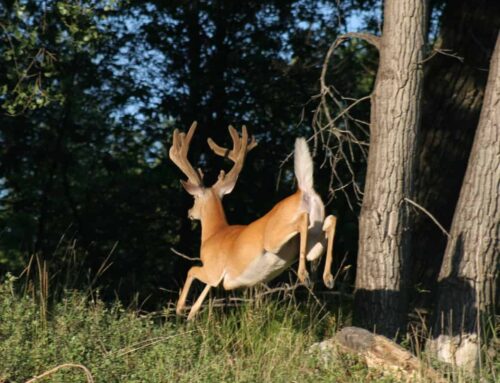Whitetails love to roam the points and strips of trees and brush that border rivers and streams and grain and hay fields nearby. One November long bow hunter Luke Strommen scouted such a series of points on his Montana ranch and found them torn up with buck sign. Major doe trails wended into the woods from fields to the west and south. The timber patches were littered with rubs and scrapes.
Strommen could have hung a stand in any tree and seen deer, but he’s better than that. And he knows he has to be for 15-yard shots at bucks with his stick bow. He poked around and found the perfect ash tree near the nexus of the trails and within sight of a grassy clearing where he figured a lot of deer would gather each morning to browse and mingle before heading single file to a bedding area farther down by the Milk River.
Over the years he and other hunters have sat in the stand and watched hundreds of animals do just that. That is where he shot this beauty.
“It’s one of our money spots,” says Strommen. “You’ll see massive scrape and rub lines on and near the doe trails. All kinds of bucks work through the point while traveling to other points up and down the river.” Luke figures some 50 bucks have been arrowed from the money pit over the years, 75 percent of them Pope and Young.
POINTS: Say you hunt a property with two or three miles of river or creek bottom; several doe units will live in cover-laced points up and down the waterway, and right now rutting bucks will cruise from cover to cover checking on them; hang a stand in each point where wind and access in and out are okay…set stands along the major deer trails that connect three or four points of timber…when you’re hunting a large point of trees, narrow things down for a shot by setting up downwind of a major intersection of two or three trails blazed with buck rubs and scrapes. That spot is money.







Love the rut, mostly the pre-rut, about 1 week to 10 before peak…doe bleat, some grunts, doe bleat…sit and wait. It works. I called in 7 immature bucks the other day, 10 days before our traditional peak…then, I was out of my stand cleaning a doe I shot, saw a mature buck cross the field in front of me…I ended up calling him on the ground…grunts to get his attention and turn him around, doe bleats to get him coming..to one yard! Good luck guys!